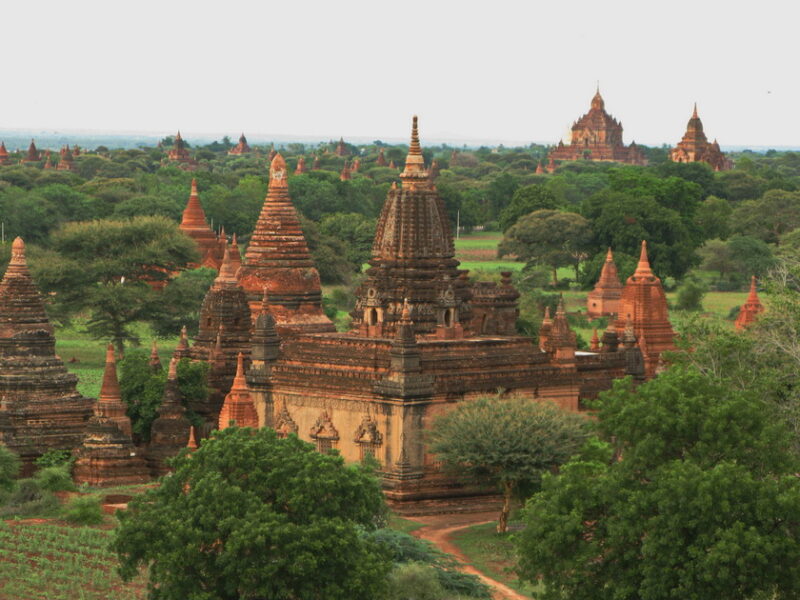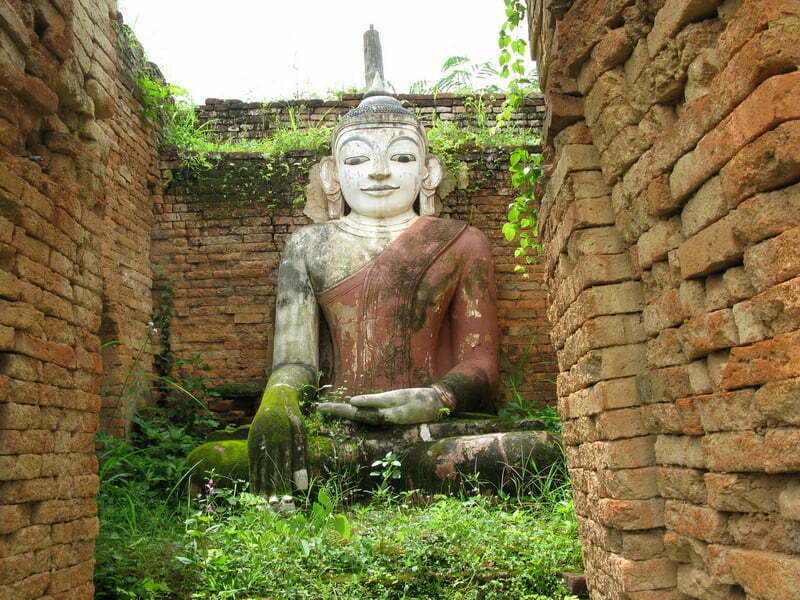 Beginnings of Buddhism in Myanmar
Beginnings of Buddhism in Myanmar
The Beginnings of Buddhism in Myanmar are debatable, it is unclear as to the exact year Buddhism was introduced, it is generally thought by scholars who have researched the subject that Buddhism had its beginnings between the 3rd and 5th centuries, there are however some who would say earlier, although there has been no defining proof. A small number of Buddhist relics excavated from the Pyu sites in Sri Ksetra and Beikthano show that there was at least a Buddhist influence, between the 5th to 6th centuries.
The earliest practising Buddhists in Myanmar were the Mon and Pyu peoples. Early Buddhist artefacts and Buddhist art in Burma show that the people of those times worshipped a mix of Theravada and Mahayana Buddhism, as well as Tantric, animist and spirit worship.
The Pagan period between the 11th – 14th centuries is undeniably the most significant period in the history of Buddhism in Burma after the first Burman King, King Anawrahta of Pagan converted to Buddhism through his interaction with the Mon monk Shin Arahan, a visiting Buddhist monk, and native of Thaton, who practised Theravada Buddhism and later his interactions with monks from Sri Lanka who also adhere to the Theravada Buddhism school of Buddhism.
The founder of Pagan King Anawrahta (1014 – 1077) wished to convert his people to the purer form of Buddhism introduced to him by the Mon monk Shin Arahan. He attempted to ban the worship of nats and spirits, but Nat and spirit worship was so entrenched among his people that he agreed to a compromise by legitimizing thirty-seven of the most popular nats of the time.
Today it is more factual that many of these chosen thirty-seven Nat’s have been replaced by others coming into existence much later during the reign of King Mindon (1853-1878) after he revised the list of chosen nat. Thirty-seven nats are still respected and celebrated each year. Around August or September, a large Nat festival is held in the Taung Phone village outside the city of Mandalay.
At the beginning of King Anawrahta’s reign, the Ari monks were considered to be corrupt monks who were displaced after the introduction of Theravada Buddhism in 1057, they practised a form of Mahayana Buddhism combined with nat and spirit worship, tantrism, naga worship, and Hinduism. There are different views on the Ari sect, it is argued that they only appeared in the 13th century and that they were thought to be generally undisciplined, drank alcohol, ate meat during religious festivals and were womanising.
According to the late Dr Thun Tun’s PhD thesis (April 6, 1923-November 30, 2005), one of Myanmar’s preeminent historians of the late 20th century on Buddhism and Bagan, he states that in later chronicles the behaviour of the Ari monks was not only exaggerated but wrongly assigned to the 11th century rather than to the 13th century.
In Burma today Theravada Buddhism is still very much intertwined with Nat and spirit worship and is reflected in much of their art and culture.
The Theravada school of Buddhism is the main form of Buddhism practised in Myanmar today and is second to the Mahayana school of Buddhism which originated in India, and is the most widespread form of Buddhism practised in many parts of Asia, China, Mongolia, Japan, Korea, and Tibet, excluding Thailand and Laos who practice the Theravada form of Buddhism, which is considered the purest form of Buddhism practised today.

 Beginnings of Buddhism in Myanmar
Beginnings of Buddhism in Myanmar